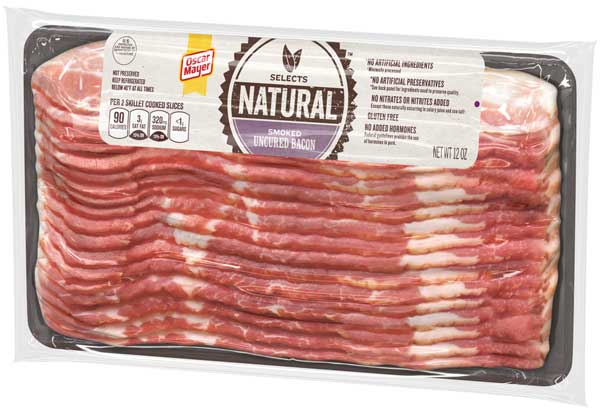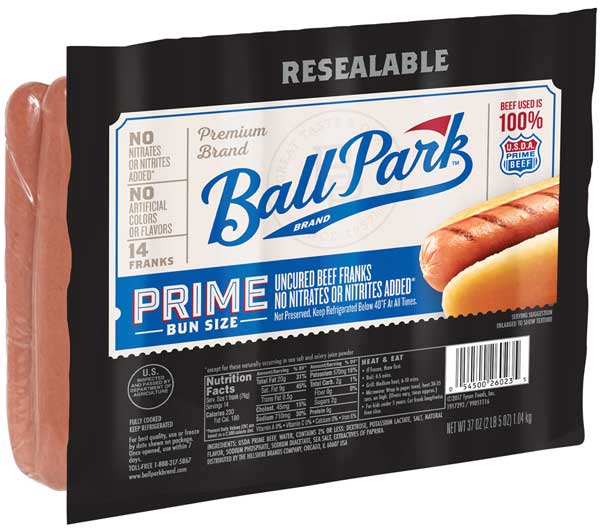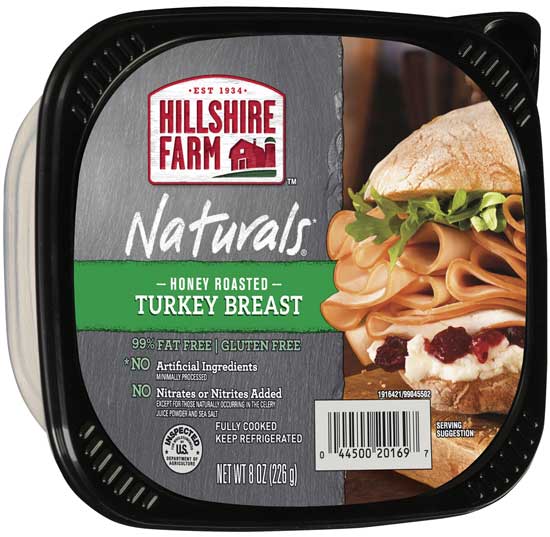Formulating Processed Meats for Clean Labeling
FOOD SAFETY AND QUALITY
 Many consumers are seeking food products that are natural and organic, and many companies have reformulated their products accordingly, replacing their ingredients with naturally sourced ingredients that allow them to make clean-label statements on their packages. However, a change in any of the components of a formulation—including antimicrobials, antioxidants, binders, etc.—can cause changes in the quality and safety of the product. This is especially true for processed meats, which have long been prepared by curing. The traditional method involves adding sodium nitrate or sodium nitrite to meat to serve as an antimicrobial and provide the desired cured-meat color and flavor. Sodium nitrite in meat products provides the distinctive color and flavor of cured meats and controls the growth of microorganisms such as Listeria monocytogenes, Clostridium perfringens, and Clostridium botulinum. Over the past several years, instead of using nitrites or nitrates as direct additive curing agents, manufacturers have begun using ingredients that naturally contain nitrate and nitrites.
Many consumers are seeking food products that are natural and organic, and many companies have reformulated their products accordingly, replacing their ingredients with naturally sourced ingredients that allow them to make clean-label statements on their packages. However, a change in any of the components of a formulation—including antimicrobials, antioxidants, binders, etc.—can cause changes in the quality and safety of the product. This is especially true for processed meats, which have long been prepared by curing. The traditional method involves adding sodium nitrate or sodium nitrite to meat to serve as an antimicrobial and provide the desired cured-meat color and flavor. Sodium nitrite in meat products provides the distinctive color and flavor of cured meats and controls the growth of microorganisms such as Listeria monocytogenes, Clostridium perfringens, and Clostridium botulinum. Over the past several years, instead of using nitrites or nitrates as direct additive curing agents, manufacturers have begun using ingredients that naturally contain nitrate and nitrites.
Naturally occurring nitrite derived by the reduction of nitrate from vegetable sources by starter cultures such as Staphylococcus carnosus is being increasingly used; examples are cultured celery powder and cultured sugar–vinegar blends. Natural nitrate sources celery juice and cherry powder are primarily used in the United States. Swiss chard is used in Europe, where celery is considered an allergen. Other naturally derived curing compounds with antimicrobial properties include weak organic acids, such as calcium, sodium, and potassium salts of lactate, diacetate, and citrate; weak organic acids produced as by-products of microbial fermentation; and lemon juice and vinegar, which are natural sources of citric and acetic acids. Rosemary has antimicrobial activity but extremely high levels are needed to achieve antimicrobial levels, and that affects flavor. For all naturally derived curing methods, the goal is to reduce preservatives while maintaining flavor and color stability, microbial stability, and shelf life and to clean up the label to reduce listing of chemical-sounding names.
The Food Safety and Inspection Service (FSIS) of the U.S. Dept. of Agriculture says that standardized products such as bacon, sausages, ham, and other processed meats can be manufactured without the use of nitrate and/or nitrite but must be labeled as uncured and bear supporting statements. For example, bacon formulated with a nitrite replacement such as celery powder must be labeled “Uncured Bacon, No Nitrates or Nitrites Added” and bear the statement “Not Preserved, Keep Refrigerated Below 40°F at All Times.” Since the bacon does not contain nitrites or nitrates as direct additive curing agents, the product would also meet the agency’s definition of natural (minimally processed, no artificial ingredients) and can be labeled as natural with the statement “Minimally Processed, No Artificial Ingredients.”
Research at Iowa State University
Universities have been conducting research on ingredients to fit the need for naturally sourced ingredients for use in processed meats. Professor of animal science Joseph Sebranek said that his research for the past 10 years or so has been on buffered vinegar, cultured sugar, and other natural antimicrobials and on antimicrobial processes such as high-pressure processing (HPP) to maintain safety of processed meats. He said that ready-to-eat (RTE) meat and poultry products manufactured as uncured, natural, or organic are at a greater risk for bacterial growth than their conventional counterparts if post-lethality contamination occurs due mainly to the required absence of preservatives and antimicrobials. Some fruits and vegetables contain relatively high levels of nitrate, but because of concerns about the flavor and/or color effects associated with natural sources of nitrate in the production of natural and organic processed meat products, most emphasis has been placed on celery. Sebranek and his coworkers have conducted research on the following topics:
• Nitrite-embedded film (NEF). The study involved testing a vacuum-packaged, conventionally cured control (using purified sodium nitrite with sodium erythorbate); an alternatively cured bologna (using nitrite from cultured celery juice powder with cherry powder) packaged in vacuum packages; and the alternatively cured bologna packaged in NEF pouches. The results showed increased redness for the products packed in NEF without significantly affecting residual nitrite levels, and there was no difference in bacterial growth counts among treatments. The results showed the promise of using NEF technology for increasing the color stability in alternatively cured meat products.
• Nitrites from vegetable sources. The study focused on the effects of various concentrations of nitrite from a vegetable source with and without HPP treatment on the recovery and growth of Listeria monocytogenes on alternatively cured RTE restructured ham. The results indicated that the combination of hurdles such as nitrite and HPP has an additive effect on inhibiting the growth of L. monocytogenes.
• Replacement of pork fat in frankfurter-type sausages by soybean oil oleogels structured with rice bran wax. Sebranek collaborated in the study led by assistant professor of animal science Rodrigo Tarté. Oleogels (gels whose liquid phase is oil) provide the nutritional benefits of oils and the positive organoleptic and physical attributes of harder, more-saturated fats. The results showed that the rice bran wax oleogels withstand high-shear processing and remain beneath an acceptable lipid oxidation threshold. They have the potential to successfully replace pork fat in comminuted products and may also serve as a delivery mechanism for fat-soluble nutritional components in meat products.
• Inhibition of L. monocytogenes by buffered dry vinegar. The low pH of non-buffered vinegar can denature the meat proteins and affect the product texture, but buffered dry vinegar (dry white distilled vinegar buffered with sodium or potassium carbonate, bicarbonate, hydroxide, or a combination) has a higher pH and minimal impact on the physical and sensory properties of the product. The buffered dry vinegar was effective in inhibiting L. monocytogenes in reduced-sodium RTE uncured turkey without adversely affecting the quality attributes.
 • Natural antimicrobial ingredients and post-lethality interventions. The study involved using natural antimicrobials cranberry powder, dried vinegar, and lemon juice–vinegar concentrate and the post-lethality interventions lauric arginate, octanoic acid, thermal treatment, and HPP on alternatively cured frankfurters. The results showed the bactericidal properties of HPP, octanoic acid, and lauric arginate and the bacteriostatic potential of dried vinegar and vinegar/lemon juice concentrate against L. monocytogenes.
• Natural antimicrobial ingredients and post-lethality interventions. The study involved using natural antimicrobials cranberry powder, dried vinegar, and lemon juice–vinegar concentrate and the post-lethality interventions lauric arginate, octanoic acid, thermal treatment, and HPP on alternatively cured frankfurters. The results showed the bactericidal properties of HPP, octanoic acid, and lauric arginate and the bacteriostatic potential of dried vinegar and vinegar/lemon juice concentrate against L. monocytogenes.
• Preventing C. perfringens outgrowth with reduced nitrite concentrations. The study involved testing nitrite treatments of 0 ppm, 50 ppm, and 100 ppm in a broth system inoculated with C. perfringens and heated with a simulated product thermal process followed by a typical cooling-stabilization process. The results showed that 50 ppm of nitrite was more effective at preventing C. perfringens outgrowth in cooled cooked products than 0 ppm but not as effective as 100 ppm. The researchers concluded that additional hurdles such as addition of antimicrobial agents or shortening of the cooling cycle during periods of optimal C. perfringens growth should be considered to assure the safety of alternatively cured meat products that may not contain as much formulated nitrite as conventionally cured products.
Sebranek said that the trend toward labeled cured meats labeled natural and organic causes concerns about shelf life and safety because changes in formulation reduce use of traditional preservatives, and manufacturers of cured meats have to compensate by incorporating ingredients that qualify as natural, such as buffered vinegar and fermented sugars. Fermented sugars provide organic acids such as acetic and propionic as fermentation by-products that are effective antimicrobial agents. HPP of natural products provides an extra margin of microbiological safety, he said. Another consideration is oxidation. Traditional antioxidants like BHA and BHT are chemicals and can’t be used for clean labeling, so there is a trend toward use of extracts from plants such as rosemary and green tea as antioxidant compounds.
Research at the University of Wisconsin–Madison
Associate professor and extension meat specialist Jeffrey Sindelar and his coworkers have been conducting research on the efficacy of alternative methods for curing. The bulk of what they have done lately is on thermal processing and food safety, studying different aspects of thermal processing, including cooling time after thermal processing. Over the past several years, Sindelar and his coworkers have studied the effects of clean-label ingredients on cured and uncured meats. Their research has included the following studies:
• Ingredients that inhibit L. monocytogenes in RTE meat and poultry products. The researchers screened 14 ingredients in uncured (no nitrate or nitrite added), traditionally cured (sodium nitrite), cultured (alternatively cured, natural nitrate source, and S. carnosus), and preconverted (alternatively cured, natural nitrite source) turkey slurries. They also evaluated three antimicrobial ingredients (a vinegar-lemon-cherry powder blend, buffered vinegar, and a cultured sugar–vinegar blend) in alternatively cured ham, uncured roast beef, and deli-style turkey breast. The results suggested that antimicrobial ingredients from a natural source can enhance the safety of RTE meat and poultry products, but their efficacy is improved in products that contain nitrite and have lower moisture content and pH.
• Inhibition of L. monocytogenes in deli-style turkey breast. This study involved RTE turkey breast formulated with cultured celery powder in combination with antimicrobials such as a conventional potassium lactate–sodium diacetate blend or a cultured sugar–vinegar blend. The results confirmed that the concentration of nitrite, rather than the source, is the primary factor in enhancing the safety of RTE meats.
• Clean-label antimicrobials and nitrite derived from natural sources. This study examined the effect of clean-label antimicrobials on the outgrowth of C. perfringens during cooling of deli-style turkey breast. Commercial thermal processing normally destroys vegetative C. perfringens cells but also activates any present spores to germinate. The FSIS has established time and temperature standards for chilling of uncured products without sodium nitrite and cured products containing purified sodium nitrite. The researchers studied products made by using tropical fruit extract, dried vinegar, cultured sugar–vinegar blend, and lemon-vinegar blend, each with and without nitrite from cultured celery juice powder. The results provided additional options for meat processors to incorporate adjunct ingredients and safely chill alternatively cured products.
 • Curing ingredients derived from purified and natural sources. The researchers investigated whether C. perfringens outgrowth during cooling of deli-style turkey breast would be inhibited and investigated concentrations of nitrite from cultured celery juice powder and ascorbate from cherry powder to simulate alternative curing formulations. The results showed that equivalent concentrations of nitrite, regardless of the source, provide similar inhibition of C. perfringens during chilling and that ascorbate enhances the antimicrobial effect of nitrite concentrations commonly used in alternatively cured meats.
• Curing ingredients derived from purified and natural sources. The researchers investigated whether C. perfringens outgrowth during cooling of deli-style turkey breast would be inhibited and investigated concentrations of nitrite from cultured celery juice powder and ascorbate from cherry powder to simulate alternative curing formulations. The results showed that equivalent concentrations of nitrite, regardless of the source, provide similar inhibition of C. perfringens during chilling and that ascorbate enhances the antimicrobial effect of nitrite concentrations commonly used in alternatively cured meats.
• Effect of sodium nitrite, sodium ascorbate, and residual nitrite concentrations on growth of L. monocytogenes. The study involved RTE vacuum-packed, cooked, cured pork sausage. The results confirmed that while ingoing nitrite concentration influences growth, residual nitrite concentration also contributes to the antimicrobial effect.
• Effects of moisture, pH, and a commercial antimicrobial (cultured sugar–vinegar blend) on growth of L. monocytogenes and the spoilage microorganism Leuconostoc mesenteroides. The study was performed on uncured deli-style turkey breast. The results showed that the antimicrobial inhibited growth of L. monocytogenes but had little effect on growth of L. mesenteroides.
Sindelar said that nitrite is nitrite regardless of the source and that the same food safety approaches, such as microbial growth inhibition and cooling parameters, can be utilized for natural and synthetic nitrite. Natural sources are equally effective for controlling Listeria, he added, but one problem is the inability to standardize active components of those ingredients. If a company is producing a fruit extract, it must have the ability to show that antimicrobial activity is the same from lot to lot. The biggest challenge ahead, he said, is to replace the critically important core functional ingredients with clean-label ingredients that provide the same functionality and do it in a cost-effective way. There are some really good ingredients, he said, but some are simply too expensive to be economically feasible replacements.
 Neil H. Mermelstein, IFT Fellow,
Neil H. Mermelstein, IFT Fellow,
Editor Emeritus of Food Technology
[email protected]


